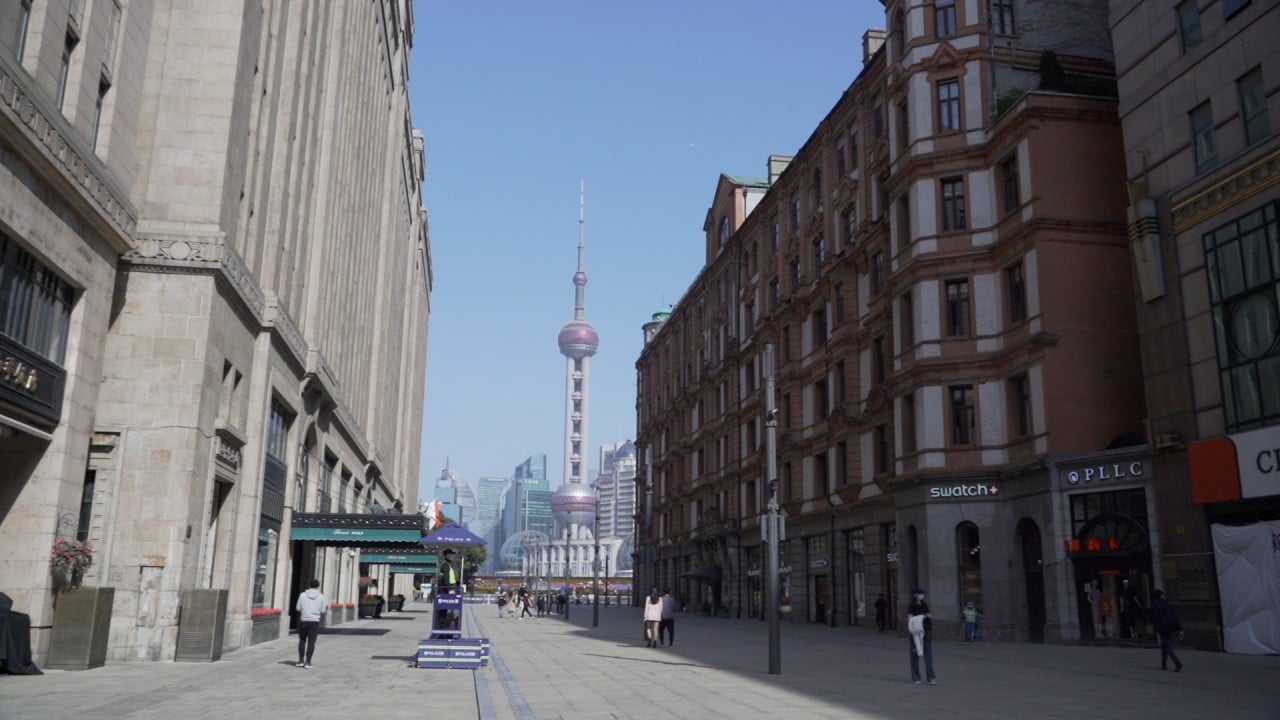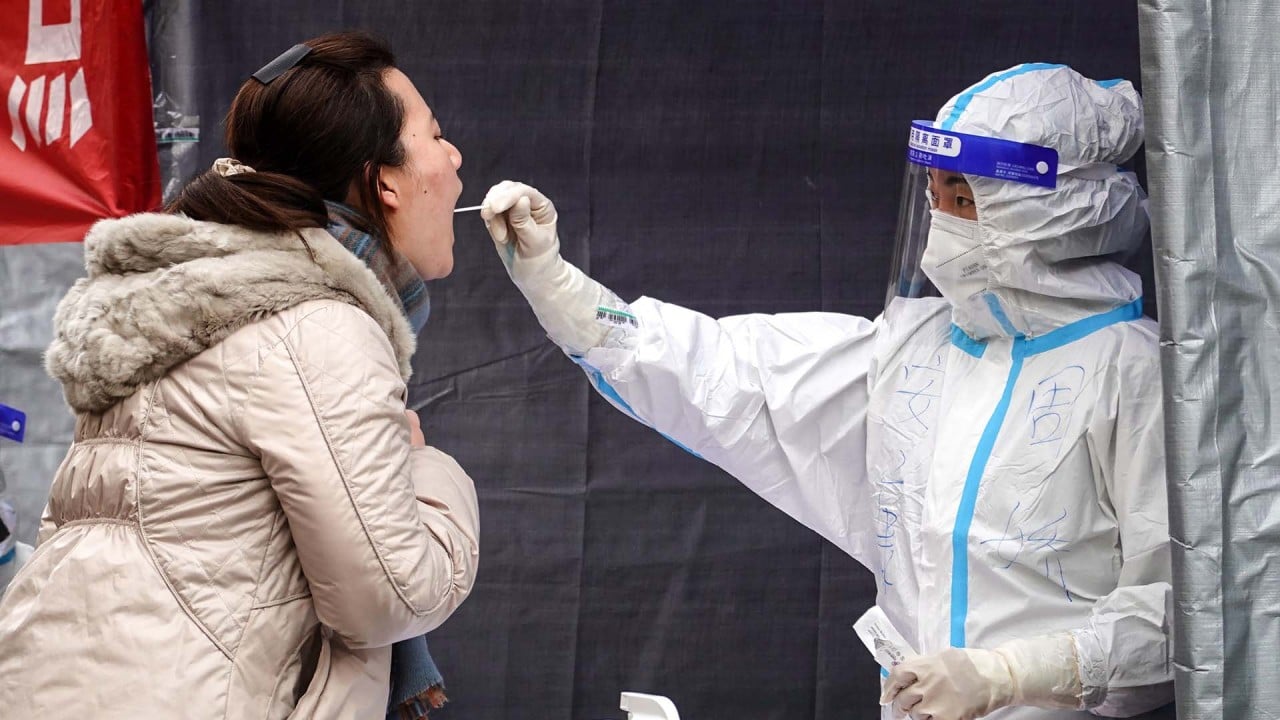
02:13
Shanghai fighting its worst Covid-19 outbreak since start of the pandemic
China’s zero-Covid policy leaves poorer regions with little choice but ‘rigid and crude’ lockdowns
- Jilin province in the northeastern rust belt has been effectively sealed off, with all inter-province travel banned, and neighbouring Liaoning is taking pre-emptive measures
- For many local authorities, economic costs of strict lockdowns may be nothing compared with the political implications of a runaway outbreak
Into the third week of March, snowfall continues to coat the empty streets of Changchun, the capital city of northeastern Jilin province, glistening and mostly untouched by traffic.
Facing its most serious wave of coronavirus infections since the onset of the pandemic, the city of 9 million people has been in a full lockdown since Friday, forcing residents to self-quarantine at home.
And the entire province has been effectively sealed off since Monday, with all inter-province travel banned.
Jia Xinyu, a long-time Changchun resident, says it’s an all-too-familiar situation – the city has been locked down three times since the initial outbreaks of the coronavirus in early 2020. Or once per year.
“After the previous two lockdowns, people here are more prepared this time,” Jia said. “Most households have stored food.”
China’s Covid-19 epicentre embraces rapid antigen tests to curb outbreak
But even though the lockdown is nothing new for the people of Changchun, this time the situation appears to be much more severe. Hit by the highly transmissible Omicron variant, the entirety of Jilin has been reporting more than 1,000 daily infections since Saturday – a figure no other mainland province has seen, with the exception of Hubei after the coronavirus was first detected in Wuhan.
“Even if they contain the outbreak through lockdowns this time, they can’t eradicate the virus,” said Huang Yanzhong, a senior fellow for global health with the Council on Foreign Relations think tank.
“The immunity level of the whole Chinese population is low. Facing Omicron, there’s many a slip between the cup and the lip, so there might be repeated stringent lockdowns, one after another.”
While most countries have embraced the mindset of “living with the virus” and lifted social-distancing restrictions, Beijing has doubled down on its “dynamic zero-Covid strategy”, and local authorities across the country have stepped up durations of mandatory quarantines for travellers from overseas: the most extreme example being in Liaoning, another province in the northeast, which requires a 28-day hotel quarantine and another 28 days of health monitoring.
Experts said that, while China’s most developed cities such as Shanghai may be capable of implementing more precise prevention measures while refraining from full-scale lockdowns to handle local outbreaks, their experiences are far from replicable in most parts of China, especially those hindered by weaker financial resources, limited bureaucratic capacity and poorer governance.
The northeastern provinces, where sluggish economic conditions and massive population outflows have worsened over the past decade, are a typical example. Here, more flexible and less stringent measures that put less pressure on the local economy are a luxury that cannot be afforded.
“Lockdowns are rigid and crude but the quickest way to achieve the goal of zero-Covid,” Huang said. “Flexibility requires more intelligence and efforts.”
Cities such as Shanghai and Shenzhen are too economically important. The costs of a full lockdown are much bigger
As Jilin grapples with the current outbreak, fear has quickly spread to neighbouring Liaoning. With a few cases being detected each day, multiple cities in the province were quick to close schools and entertainment venues this week.
The capital city, Shenyang, has also shut down its airport, banned indoor dining and ordered citywide mass testing. The city reported 17 local infections on Wednesday.
Beijing has repeatedly emphasised that it is aiming to strike “a better balance between pandemic control and economic development”.
But for less-developed regions, the economic burden of shutting down an entire city is relatively smaller, and thus more acceptable, than shutting down major economic hubs, according to Chris Li, CEO of Zhibenshe, a private think tank based in Guangdong province.
“Cities such as Shanghai and Shenzhen are too economically important,” Li explained. “The costs of a full lockdown are much bigger, so [local authorities] still weigh in economic factors.”
China university chief in Jilin sacked after Covid outbreak at student residence
But for local authorities in poorer cities, economic costs may be nothing compared with the political implications of a runaway outbreak.
Similar to what has happened amid previous rounds of major outbreaks elsewhere, Jilin province quickly dismissed two local officials on Saturday, including the mayor of Jilin city, where a university became the epicentre of the current outbreak.
“So, no official dares to relax the restrictions before Beijing changes its broader strategy,” Su said. “No matter what the social and economic costs are, this is the requirement of political logic.”
But the high transmission rate of Omicron may turn the precise containment measures – described as “catching rats in a china shop without breaking the plates” by Zhang Wenhong, one China’s best-known figures in the fight against the coronavirus – into mission impossible, according to Huang.
“Now, even though the city of Shanghai is not under a full lockdown, most of its neighbourhoods have been shut down,” he said. “If Shanghai can’t do it, no other city can do it.”
China has set an “around 5.5 per cent” economic growth target for 2022, but following the current outbreaks, coupled with other factors such as supply-chain disruptions and the war in Ukraine, many analysts have questioned whether achieving the target is feasible.
Eventually, China will have to pivot to a mode of living with the virus and tolerating a higher level of cases, said Michael Hirson, practice head of China and Northeast Asia at Eurasia Group.
“But this pivot won’t come until at least after the 20th Party Congress this fall,” he said, echoing similar sentiments from other analysts.
“The result is that the supply chains and the economy will remain under pressure from the containment battle this year.”


